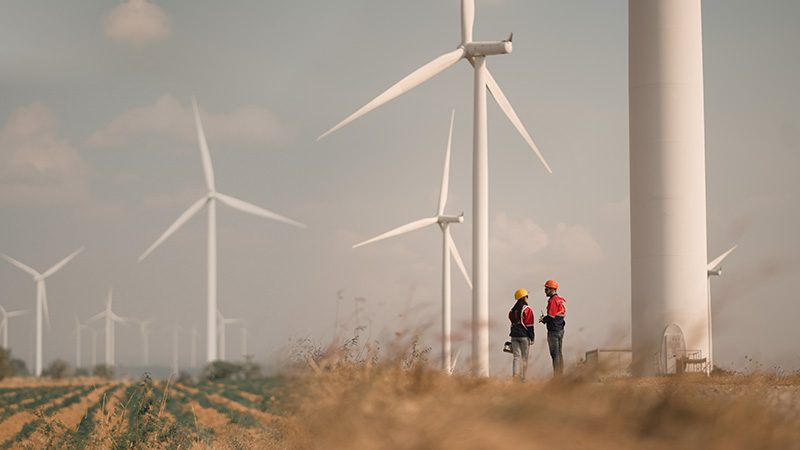As renewable energy projects continue to expand, they are reshaping zoning dynamics, influencing property values, and opening up new income opportunities for landowners. For developers, the shift introduces fresh challenges and strategic advantages—especially when it comes to selecting the right site.
In this post, we’ll explore how renewable energy impacts land use, what it means for both property owners and project planners, and how tools like Acres.com can simplify smart site selection in this evolving landscape.
Contents
How Renewable Energy Projects Influence Land Development
What This Means for Landowners
Key Considerations for Renewable Energy Developers
Effects on Property Value
How Incentives Fuel Energy Projects
Planning Energy Projects with Acres
How Renewable Energy Projects Influence Land Development
Wind and solar farms are changing how land is developed and valued, especially in areas near power infrastructure.
For residential properties, proximity to a new wind or solar project may initially raise concerns about views or noise. Over time, however, many of these concerns diminish, with impacts often more about perception than actual change.
In contrast, commercial sites, especially data centers, benefit from nearby clean energy. Constant, reliable power is a necessity for these high-demand users, making nearby renewable sources a strategic advantage.
For developers, this means thinking about energy access earlier in the planning process. It’s no longer just about location and zoning, it’s also about whether there’s clean, consistent power available nearby.
What This Means for Landowners
If your land sits near infrastructure like transmission lines or substations, it may be prime real estate for renewable energy development—unlocking long-term income potential.
Key Considerations:
- Leasing is a long-term commitment with significant legal and financial complexities. Consult the appropriate legal and tax professionals, and always do your due diligence on the developer.
- You may still use the land—but differently. Agrivoltaics, for instance, combine solar panels with grazing or specialty crops. Keep in mind that dual use requires careful planning around potential tradeoffs, like decreased yield from some crops or design complexity.
- Location brings leverage. The closer you are to the grid, the stronger your negotiating position.
Key Considerations for Renewable Energy Developers
The best sites aren’t just sunny or windy.
Evaluate land based on:
- Grid proximity. Land near energy infrastructure can reduce costs and delays.
- Buildability and permitting. Flat land with fewer regulatory hurdles speeds up development.
- Power partnerships. Collaborating with large energy users (e.g. data centers) can help guarantee demand.
How Renewable Projects Affect Property Value
New energy projects can prompt questions about how nearby property values will change.
Here’s what to know:
- Short-term dips are common—but often recover. Proximity to wind farms can cause significant value declines post-announcement, which tend to stabilize post-construction.
- Solar projects usually have a smaller footprint, and a smaller effect on home values. In some places, they’ve even had a slightly positive impact.
- Community perception matters. Transparent planning and local benefits, like tax revenue, help ease concerns.
- Visibility and distance matter. Projects hidden from view or located farther away tend to have minimal or even favorable effects.
How Incentives Fuel Energy Projects
Incentives can be the tipping point for a project’s viability.
Consider these options:
- Federal tax credits such as the Investment Tax Credit (ITC) and Production Tax Credit (PTC) reward both construction and power output. A tax professional can help you navigate these tax structures.
- State and local programs may include rebates, exemptions, and performance-based incentives.
- Eligible zones like energy communities or brownfields may qualify for added benefits, potentially making nearby parcels more attractive for development.
For landowners, these perks can boost demand and give your property a competitive edge if it meets the right criteria.
Planning Energy Projects with Acres
Acres’ Layer Library makes it easy to visualize and evaluate land for renewable energy potential.
With just a few clicks, you can:
- Visualize infrastructure like wind turbines, solar sites, and transmission lines.
- Overlay zoning and land use data to identify opportunities and risks.
- Evaluate parcels by buildability, proximity, and recent comps.
Want to dig deeper? Read our How-To Guide on using Acres to identify the right site for a renewable energy project.
Final Thoughts
Renewable energy projects are reshaping the land market—from how parcels are used to how they’re valued.
- For landowners, this means new possibilities for long-term income.
- For developers, it’s about smarter siting, better infrastructure access, and faster project timelines.
For access to hundreds of data layers, including critical infrastructure and power data, connect with our sales team today!
